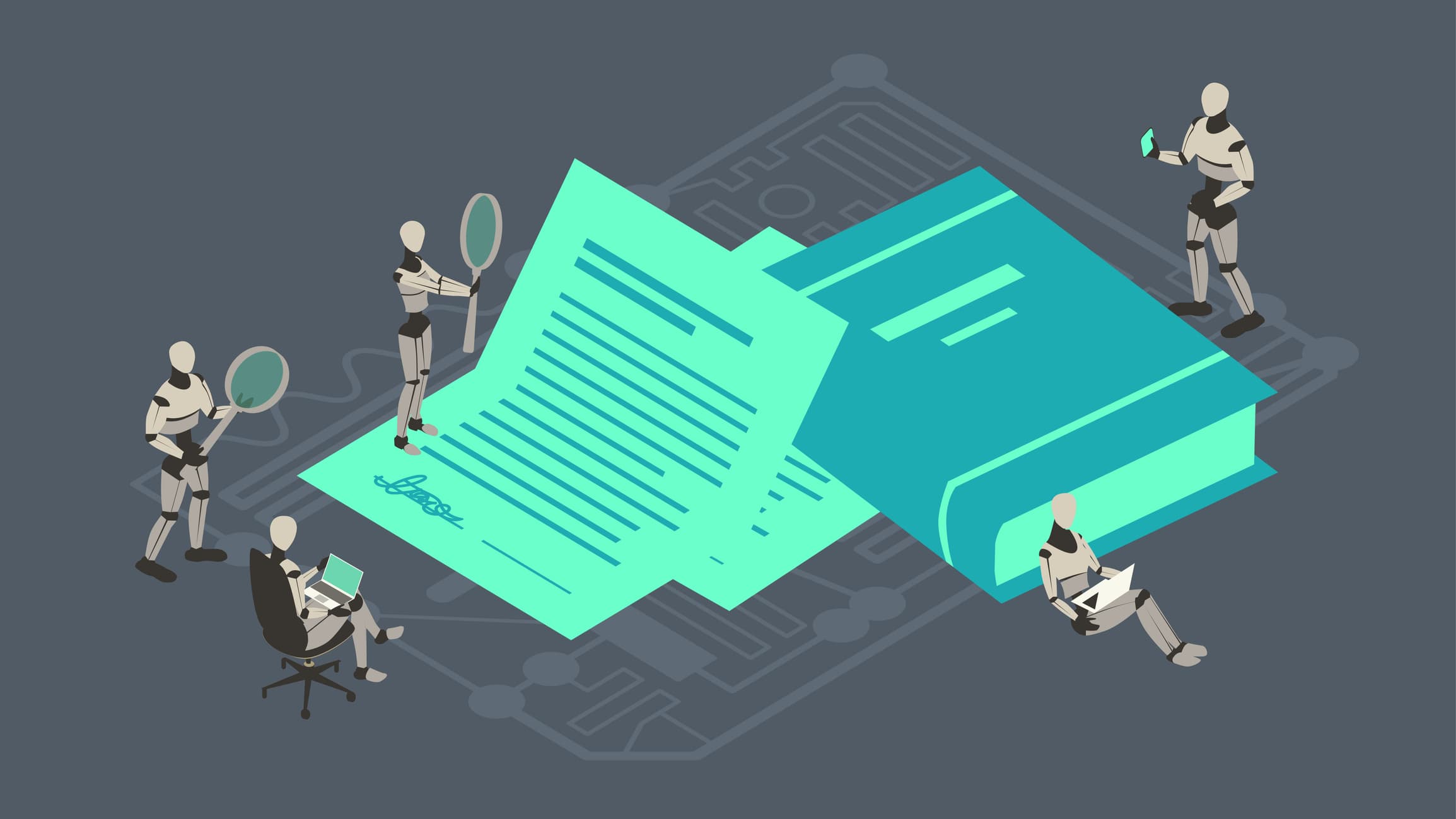
Demystifying AI-Powered Automation: A Practical Example in Higher Education
When we think of artificial intelligence (AI) in higher education, it’s usually in the context of how students can use this technology to gain an undeserved advantage over the traditional education process. However, in the back offices of higher education institutions, staff are hard at work figuring out how AI can be applied to deliver a better experience for stakeholders across the institution. In this blog, we will explore practical applications of AI to enable shortened process timelines, increased productivity, and an overall improvement in the student experience.
What is AI and What Isn't?
AI uses computer algorithms and models to help solve problems. It’s not a magical thing that knows everything. Still, it’s good at learning from information, making decisions based on patterns it finds, and applying the logic it has been programmed to follow (i.e., its Algorithm) to complete a task. In a higher education institution’s back office, AI can help perform repetitive and time-consuming tasks for humans, like organizing data, automating processes, or handling routine paperwork.
How Do You Use Automation in Your Institution?
It’s no secret that higher ed is one of the most process-heavy industries, which makes it relatively easy to identify areas that could benefit from automation. Doing so involves answering a two-part question: First, what processes are candidates for automation? Second, how can it can be done?
To find candidate processes for automation, the focus should be on the departments that deal with heavy paperwork, like admissions, registrar, and financial aid, for example. Next, identify the groups of tasks or processes that happen repeatedly and require the involvement of people, as well as the systems that support the existing process, e.g., SIS, DMS, CRM, ERP, etc. Armed with the list of processes targeted for automation and the systems involved, one can turn to answer the question of exactly how these can be automated.
The next step is to identify how to accomplish the automation in terms of technology, systems, and integrations. To non-technical folks, this may seem daunting, and as a result, it’s often in this step that automation initiatives fizzle out. However, it’s precisely here that an extra push should be given to persevere since a solution lies closer than it seems.
There are many automation solutions in the market to choose from, but we recommend focusing on low-code/no-code solutions with open APIs for integrating into other systems (or, even better, ones that are currently used successfully in higher education).
Let’s look at a practical example of using AI to automate the process of incoming transcript evaluation and articulation. Traditionally, processing transcripts involves tedious manual intervention and large spreadsheets. However, using a readily available solution that incorporates the power of intelligent document processing (IDP) and business process automation (BPA) can reduce this process from several days of repetitive manual work to a few hours of handling exceptions.
This solution shifts the manual tasks of extraction, data entry, review, comparison, and classification to the software, where once manual steps are automated as follows:
- Ingesting the transcripts: Transcripts come in many formats, and capturing their information can be tedious. Here, the IDP automatically ingests and sorts any type of transcripts, regardless of format and how they are received.
- Pre-processing of the transcript information: At this step, the IDP applies AI to clean up errant marks, fuzzy scans, or blocky lettering to pave the way for high-accuracy, crystal-clear data extraction.
- Auto classification of information: Manually sorting through transcripts and coursework from seemingly infinite sources can feel like running in a hamster wheel, but this is a cakewalk for the IPD. Simply put, the IDP uses AI to determine what kind of document it’s reading and knows how to make sense of the information contained in it.
- Information extraction and validation: The software extracts the relevant data from the transcript using AI. It knows where to find all the information, such as a student’s name, the institution, and other personal details. It also pulls the course numbers, titles, and descriptions per your preset business rules. The AI allows the IDP to “read” data like a human can and match information without needing templates. The IDP also alerts for low-confidence results, so staff only needs to handle exceptions.
- Perform the articulation: The IDP applies equivalency or articulation rules to everything it has learned. This is where the real power of AI becomes evident as an aid in decision-making. The finalized evaluation is formatted and placed in the hands of the final approver, along with updating the SIS through an electronic batch file or API integration.
Using AI for Good
As we have explored in this post, automating tedious manual processes can help higher education institutions streamline their operations, reduce costs, and enhance the student experience. By employing AI-powered BPA and IDP technologies, higher education institutions can allocate their resources more effectively and focus more on their core teaching and learning mission.
Perhaps most exciting is that the transcript processing example in this article is one of many potential automation opportunities inside higher education institutions. All the software and services necessary to accomplish process automation are readily available today for institutions to deploy complete automation solutions for almost all manual processes.
This guest blog was authored by Ricardo Rengifo, President of DBS Software & Services (DBS). DBS is proud to be a strategic Jenzabar Applications Partner offering document management and process automation solutions that integrate with Jenzabar’s products. To explore how process automation could help your institution, visit www.dbsgroup.net or contact Jenzabar.



